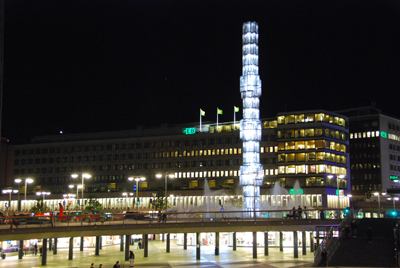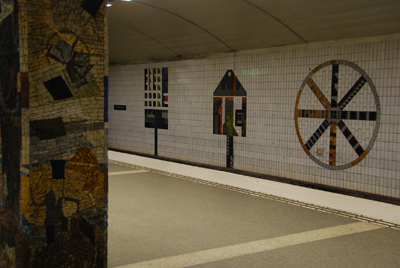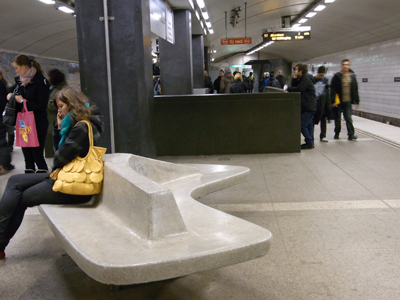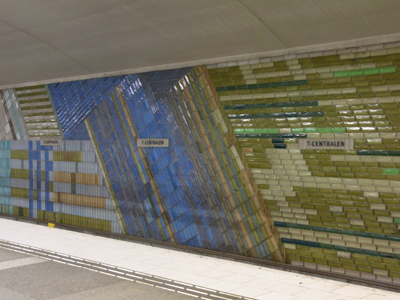
Top > HISTORY 50'
The first underground train line was opened in 1950, but
it took another seven years before the first artworks were installed.
Ever since the nineteenth century, a debate had raged in Sweden
over the need to make art public and accessible to people outside the salons,
inspired partly by August Strindberg(1849-1912).
In the Stockholm of the 1950s artists Vera Nilsson and Siri Derkert were
the prime movers behind the campaign to bring art to the Metro.
On 18 April 1955 two motions on art in Metro were submitted
to Stockholm City Council and work was able to begin.

In 1957 T-Centralen was the first station to gain art, following a competition
launched the previous year. The 12 winning artists were displayed in the station.
T-Centralen's tiling, tiled reliefs and benches still feel remarkably modern even today.
The Metro's green line is the Metro of the 1950's.
The majority of the stations on the green line are above ground,
with only a few below ground.
The suburban lines largely follow the route of the old tram
lines. The above ground stations on the Metro are therefore
often in the same places as the old tram stops.
The subterranean 1950s stations were built using the cut and cover method,
which involved digging up the streets and building a concrete tunnel
complete with tracks, platforms and all the technical installations,
before filling it in again over the top. This can be seen on the stretch of
line from Hötorget to Fridhemsplan.
Building using cut and cover technique was an expensive method.
Many of the 1950s stations were designed by Peter Celsing.
He was the chief architect of the Stockholm Tramways,
from 1948 to 1952 but is probably famous for the architect
behind Kulturhuset, Riksbanken and Filmhuset.

Tiled walls inspired by the underground tram stations of the 1930s
are typical of the subterranean stations of this period, a style
that has been described as "bathroom architecture".
The stations are close to the surface and most have just one narrow
platform without a separating wall so the whole station can be viewed easily.
Hötorget , Rådmansgatan and S:t Eriksplan are prime examples of typical 1950s underground stations.
| BACK | TO 1960S |


